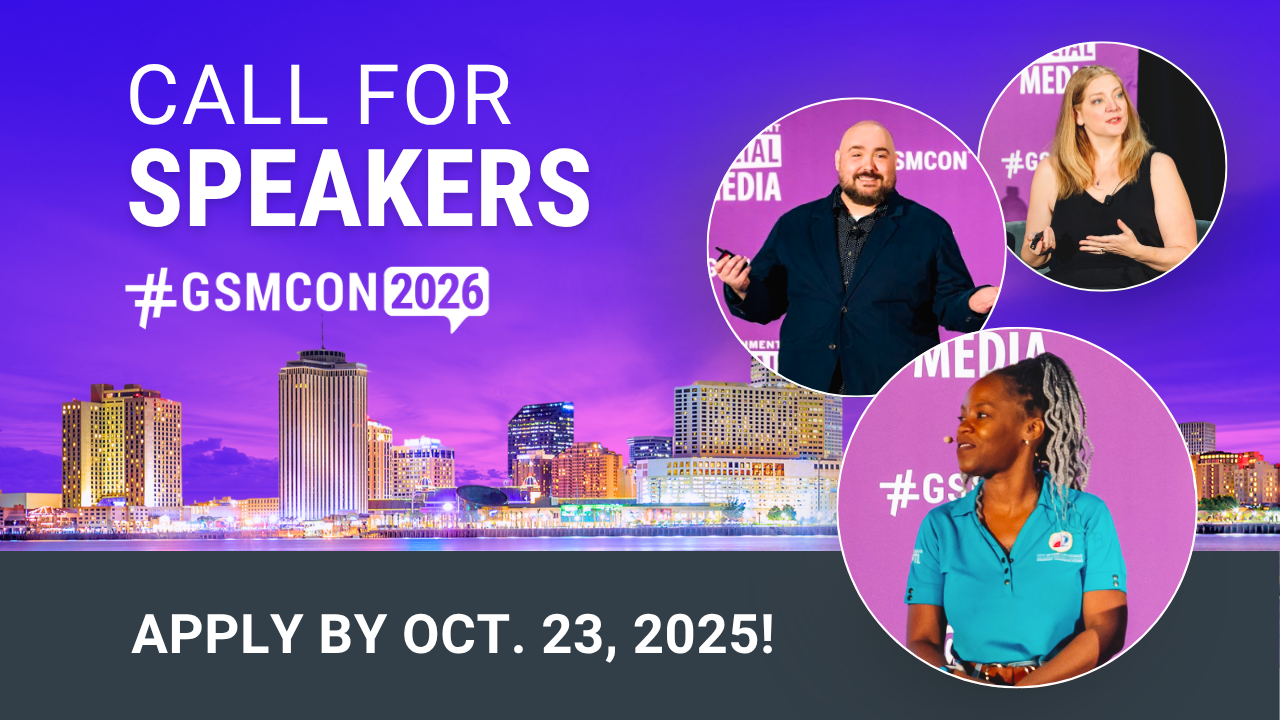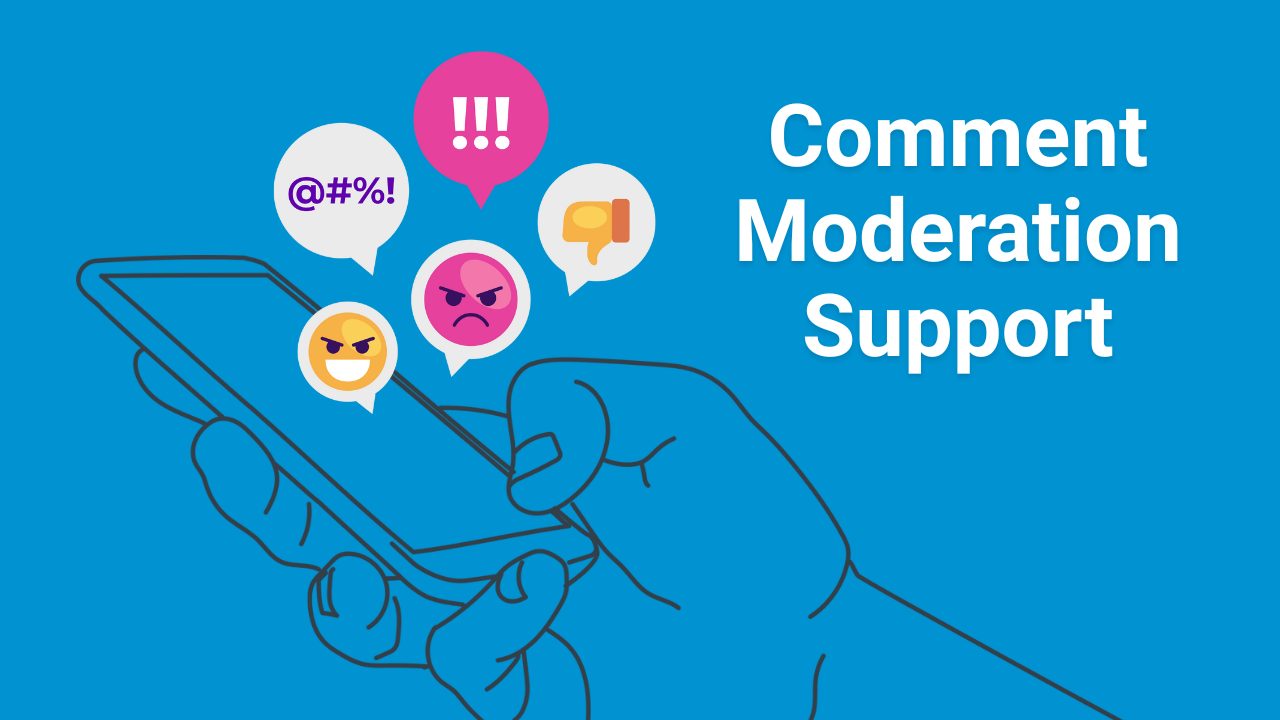
SocialGov secret: Being social, not doing social media
Aug 16, 2021Contributed blog by Russel Lolacher, Director of Web and Social Media Services for the BC Ministry of Transportation and Infrastructure and author of the Relationships at Work blog
One of the biggest mistakes I’ve seen government organizations make on social media is treating it like it’s not SOCIAL media. They find it far more important to DO a platform than BE the experience their audience expects, which can be damaging to your relatability and transparency in the government space.
If your agency sets up a branded account on social media, you are making a promise to meet the expectations of a social media experience: listening, responding and providing information, and doing it all quickly.
Defining social media
“Social” is defined as “seeking or enjoying the companionship of others” and “living in a community” while “media” is the means of communication. So, when using social media, it’s expected it’s being done to connect people, to provide communal value through a technical platform. It is a tool to facilitate this connection, and it’s how that tool is used is really the most important thing. That’s where the difference between DOING and BEING social is defined.
What’s your intent?
One of my favorite explanations comes from Amber Naslund, an author and speaker with decades of experience in the marketing space. I’m an Amber fan, not only for her wisdom but in how she provides it – with candor. She explains that the difference between DOING and BEING is intent, and while you’re working in the government communications space, you’re still marketing to your audience and reinforcing your agency’s brand.
“DOING is an activity that anyone can easily replicate. BEING is about the INTENT behind the actions: wanting to genuinely foster conversation and make connections with people on an individual basis.” – Amber Naslund.
If your intent is to build trust and relationships with your community, you have to BE social with them. The alternative is pretty much just talking about yourself and how awesome you are. Don’t be the narcissist at the party.
But I content market!
So, content marketing is a big part of your social media strategy. OK. But that’s still not being social, even if people are talking about your content. Check out this video from Truly Social’s Tara Hunt. It dismisses the idea that content marketing IS social media… because it isn’t. We generally killed social (i.e. engagement) so content marketing rose to fill the void – creating videos, crafting graphics, writing blogs and articles and then sharing them across social distribution channels. Even though this media can be considered “social objects” or content that can create conversation and engagement, it’s not your agency’s brand being social. Again, this is talking AT, not WITH your audience.
Social and content marketing are not the same thing.
What “doing” looks like
To DO social, you are approaching social media like a checklist. Something to do so you can move on to other things in your communications plan. These are a few traits of what DOING social looks like:
- Organization-centric – posts are about what you want to say, with little consideration of your audience
- Broadcasting/push info – communication is traditionally one-way
- All platforms are treated the same – regardless of the social media tool or the audience, messaging and media are treated the same.
- Time is not a consideration – whether when posting or in responding to your audience.
- Messaging is scripted – posts are scripted, approved by multiple levels and canned for use. Focus is on control.
- Risk averse and avoidance – any interaction with negative comments is avoided. Possibly removed.
- Not “human” – little to no tone or personalization is apparent.
- Metrics focus on large numbers over meaningful ones – followers, total engagement define success with minimal further analysis.
Though the act of DOING social isn’t ideal for your customers, it does (sadly) have its benefits for the organization.
- Less time needed – if you care about your side of the communication, you don’t need to waste time on the relationship and trust building part.
- Less resources needed – as you won’t be responding to customers, the added staff needed for growth won’t be necessary.
- Easier to manage – with this amount of control and lack of interest in engagement or service, your organization will have less work to do. You can determine how busy you do or do not want to be.
What “being” looks like
To BE social, is to approach platforms as if they are a conversation with the intent of starting and maintaining a relationship with your audiences, and a crucial reason why having a dedicated member of your staff devoted to being social on social media. Yes, this can still be part of your agency’s communications planning, but it also must include organic discussion as it would be between any humans.
- Audience-centric – consider your audience with every post, engagement and share to provide the most value to them.
- Conversational – communication is two-way, and is as much about what is said as it’s understood.
- Comments are seen as more important than content – what your audience says, feels, hopes for, criticizes or overall shares with you is more important than posting a video. It’s the life blood of the relationship.
- Organic engagement focused – your social presence embraces natural conversation. It’s about having conversations like an actual person as the basis for your engagement while strategically embracing opportunities to share or post your information.
- Risk aware – you know people say bad things about you and your industry. You know they won’t agree with what you have to say on a particular topic. But you engage with them anyway, because you know that you don’t have to agree or be on the same page to start a dialogue or a relationship.
- Personalized – it’s not about speaking to the entire public, it’s about speaking to Sarah or Jermaine or Michael. Audiences build relationships with people, not logos or megaphones. So be a human talking to other humans.
- Proactive engagement – don’t wait for your audience to ask you questions. Ask them. Take any opportunity to be.
- Engagement/response metrics – you’re looking at impact and whether your engagement is actually moving the needle in regard to brand exposure, sentiment, conversions, etc. Prove that the help you provide matters to your audience.
As you can imagine, taking the more human approach of BEING social has its benefits.
- Building trust – As repeatedly mentioned in the yearly Edelman Trust Barometer, people are more likely to trust people that are like them. Being relatable and approachable allows you to open the door to that trusted connection, even for government agencies like yours.
- Social capital – your audience is much more likely to be forgiving, defend you or give you the benefit of the doubt if they like you and feel you’re providing value.
- Higher engagement – it goes to reason that the more engaging you are with your audience, the more engaging they’ll be with you. This allows your marketing and PR to improve in reach and impressions.
4 ways to BE more social
Of course, you can DO social, but to really have benefits for your organization you have to BE social. Here are a few ways to go down the better path:
- Engage with your community regularly on their platforms – Be a member of your community by sharing ideas (yours and theirs) and using hashtags that matter to your audience rather than ones you’re trying to force upon them.
- Make sure what and how you are communicating adds value – How can you help your audience? How can you make their lives easier, more informed, better entertained, etc. Look at the intent you come into conversations and make sure it’s beneficial to them.
- Be open to all types of comments, responding openly, honestly and human – Your audience isn’t going to love everything you say and do, and that’s OK. Be open to their criticism, to their misunderstanding, to their frustration and see it as an opportunity to be their friend. Listen, acknowledge and respond. You may not come away from the engagement on the same side, but you’ll have more respect for each other.
- Prioritize social more than content – Great content doesn’t matter if no one cares about it. Make sure you’re prioritizing relationships with your audience and the ingredients that go into maintaining them. They’ll care a lot more about your video, announcement, infographic, etc. if they care about you. And, you provide that opportunity by caring about them.
If this was translated into a personal relationship, BEING social is the friend that’s there when you want to move to a new home, DOING social is the friend that only calls you when they want to talk about themselves or want something from you.
Now who would you rather have in your life?
 Russel Lolacher
Russel Lolacher
Director of Web and Social Media Services for the BC Ministry of Transportation and Infrastructure
Russel defines and leads TranBC and @DriveBC in social customer care, emergency communications and public engagement. Sharing his thoughts through his blog, Relationships at Work, he has been internationally recognized as a top customer service expert by Microsoft and Hootsuite and in Forbes and Huffington Post. Follow Russel on LinkedIn.
Best communicate with the public you serve by becoming a part of the free Government Social Media network — only available to full/part-time employees of government or educational institutions.
We support the largest network of government social media professionals in the U.S. by guiding government agencies through complex social media issues. Government Social Media helps you successfully communicate with the public you serve, protect your agency and keep public trust while finding your support community.
Government Social Media® empowers government professionals to achieve mastery in social media through conferences, online training, and association membership. Best communicate with the public you serve and get connected with fellow socialgovs by registering for the 2026 Government Social Media Conference happening in New Orleans, LA and virtually from wherever you are! Join the free GSM Network for text-only chats on socialgov topics or access the Government Social Media Association (GSMA) for regional virtual meetups and educational webinars.









